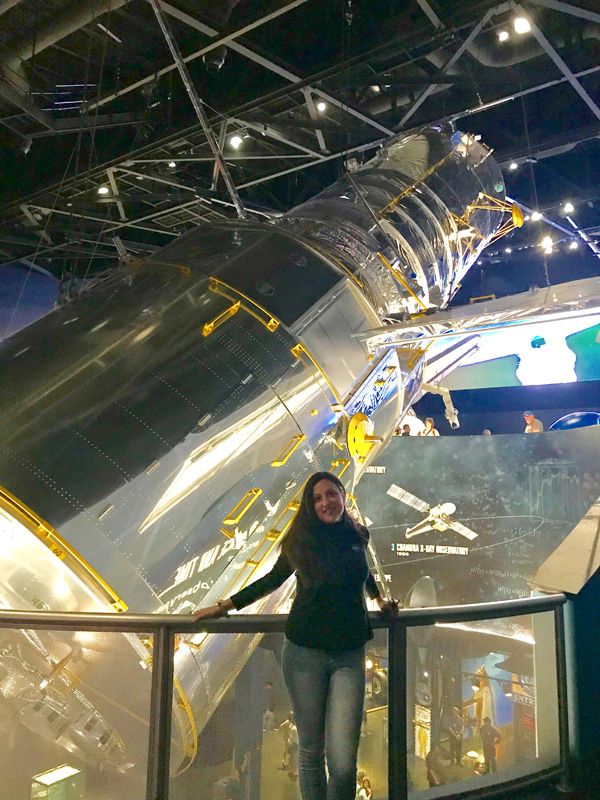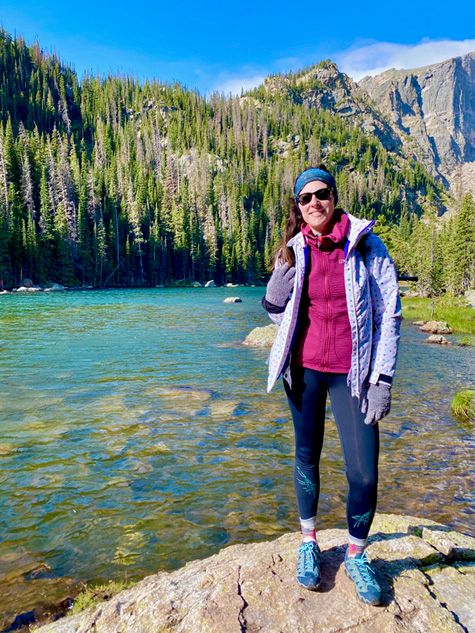Early Career Scientist Spotlight
Dr. Gioia Rau
Astrophysicist
Exoplanets and Stellar Astrophysics Laboratory
Did you always know that you wanted to be an astrophysicist?
I discovered that I wanted to be an astrophysicist at a very young age, as I was immensely fascinated by the night sky. I wondered: how big is the Universe, and what is out there? I remember the night times as a child, in the Scout camps in the Appennini Mountains in Italy, seeing the night sky and being so amazed by the vastness of the Universe, and by how small we are in comparison to the infinity of the Cosmos. That period of time, the 90’s, were also the Shuttle era, and I was always watching every launch with my dad and feeling so excited by it… Since then, my dream has been to work at NASA!
What motivated you to pursue a career in astrophysics?
Since I was very young, my dad, who died just three months before I submitted my PhD thesis, has been inspiring and fueling my love for science with Asimov, math, and astronomy books and computer games, Meccano, and Lego. Around 8 years old, I saw Saturn for the first time through a telescope, and that was when I knew I wanted to be on the forefront to discover more about the Universe out there! My passion for astronomy continued to grow ever since.

Credit: Dr. Gioia Rau
What science question intrigues you the most?
“Where do we come from?” Nucleosynthesis in stellar cores is what produces most of the atomic elements necessary for life on Earth. During the late stages of stellar evolution, these heavier elements form molecules and condense into dust grains, which stars eject into the interstellar medium. These materials directly affect the formation of new generations of stars, planets, and eventually constitute the building blocks of life as we know it on Earth.
What is your research focus?
I study precisely these late stages of stellar evolution: red giant and supergiant stars. These stars are very old, and relatively cold (with respect to the other stars’ effective temperature, i.e., about ~3000 to ~5000 K); therefore, we call them “cool, evolved stars”. They are also very big in terms of radial extension, which can reach several astronomical units (i.e., the Earth-Sun distance, ~150 billion meters). But why do we care about cool evolved stars? Well, not only do these stars spread into space (through their stellar winds) molecules and dust produced in their atmosphere and, therefore, are the most important contributor to the interstellar medium enrichment; but also, they are the future of our own Sun, which will become a red giant in ~5 billion years!
In particular, I study how cool evolved stars form molecules and dust in their atmospheres, and how their mass-loss process happens through their stellar winds. To do so, I combine high-resolution spectroscopic data from the Hubble Space Telescope, together with high-angular resolution ground-based telescopes data that use a technique called interferometry. This method, interferometry, uses several telescopes that work together to provide higher resolution observations; it can theoretically produce images with the angular resolution of a huge telescope with an equivalent aperture equal to the separation (baseline) between the telescopes. This technique is of pivotal importance for identifying the details of the mass loss, as it allows us to really see “through and into” the atmospheres of these huge stars.

Credit: Dr. Gioia Rau

Credit: Dr. Alexandre Belli
Are you involved in any upcoming space missions?
Yes, several, and I am particularly excited about one that is currently under development. It’s a mission concept called SI-LP (Stellar Imager – Lunar Pole), which will, hopefully, be the first ever telescope built on the Moon!! It will observe in the ultraviolet and optical parts of the electromagnetic spectrum and it will work with the interferometric technique, allowing us to resolve unprecedented details, with a potential resolution ~100 times higher than the one of the Hubble Space Telescope! This mission will not only allow great future discoveries spanning across all the astronomical fields, but also the development of so many novel technologies to be able to build an interferometer on the lunar south pole! We are just starting to develop this mission concept right now, which depends on future funding’s availability. I really hope it will be selected to go ahead. It’s my dream mission!!!

Credit: Dr. Kenneth Carpenter and Britt Griswold/GSFC
What early career advice do you have for those looking to do what you do?
Dare to dream, and work hard toward your dreams, fueling them with wonderous projects, efforts, and endurance in your studies/work. Also, protect them preciously. From what I have learnt thus far, resilience, perseverance, grit, and hard work are some of the magic ingredients behind every successful scientist.
What do you like to do in your free time?
I love nature, and my element is the outdoors: I enjoy playing volleyball, hiking in the mountains/national parks, skiing, swimming in the Mediterranean Sea, and taking photographs. I also really enjoy communicating my science with the public through scientific outreach; I have loved doing so ever since my undergraduate studies, when I was working at the Planetarium of Rome, and have since then continued to be frequently involved in several public outreach activities, talks, and events.
Biography
Home Town:
Rome, Italy
Undergraduate Degree:
BSc, University of Rome La Sapienza, Rome, Italy
Post-graduate Degrees:
MSc, University of Rome La Sapienza, Rome, Italy
PhD, University of Vienna, Vienna, Austria

